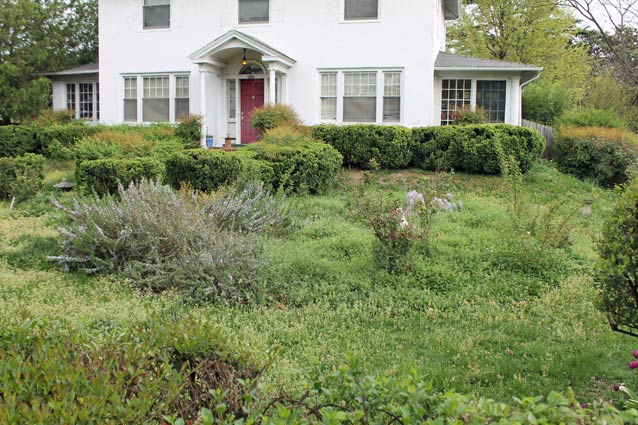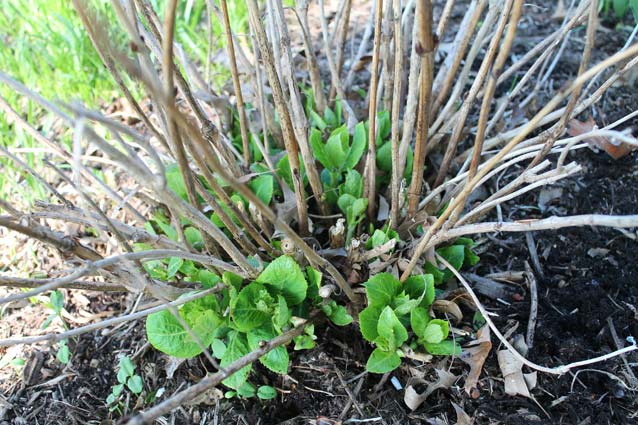Why It’s Good to Leave the Leaves
Leaves aren’t yard waste—they’re one of nature’s best mulches and compost boosters. Here are some tips to get the benefits of this valuable and free resource for your lawn and garden.

© George Weigel
Many newly planted plants, broadleaf evergreens, and borderline-hardy fare bit the dust in countless gardens in 2014, especially in the Northeast, Midwest, and mid-Atlantic states. Those who were patient found that many of the apparently dead plants were just knocked back to the ground. In some places, it took as late as the end of June to do it, but many hydrangeas, hardy camellias, crape myrtles, passion vines, laurels, roses, and other species that have been creeping northward in their range pushed surprising new growth from their bases and bare branches.
Many badly browned evergreens also produced new needles and new green tips. But if you were one of those waiting for a resurrection that didn’t happen, now’s the time to give up and dig out your lifeless plants. It’s also time to prune out any dead wood, now apparent by the lack of leaves and needles when other branches around it have come back to life. In time evergreens with browned needles will drop them – if they haven’t already – but you can help neaten them by running your fingers over and through the branches. If you get sticky sap on your hands, clean it off with butter before using water.
Beyond cleaning up after the fallen, tackle plants that have taken a beating from summer’s heat or attacks from bugs or disease. Dead, diseased, or severely browned foliage isn’t helping a plant anyway, so removing it gives the garden a fresh look heading into fall. Removing diseased leaves both on the plants or on the ground can help head off future re-infections, too. Dispose of but do not compost diseased material. Cut back perennials including daylilies, black-eyed susans, phlox, and bee balm almost to the ground after severe bouts of leaf spot or powdery mildew disease; they’ll usually grow a fresh set of foliage. Others that commonly run into summer diseases, such as peonies and lily-of-the-valley, also can be cut to the ground, but they won’t resprout until next spring.
September is the time of year when many people look outside and see an overgrown, tired, and/or floppy mess where their garden used to be. Summer has a way of doing that, with its erratic array of droughts, heatwaves, hurricane remnants, torrential thunderstorms, and occasional tornadoes and hailstorms (not to mention bugs, disease, and animal attack). This year featured the added insult of an unusually long, cold winter that created some of the worst winter landscape damage in 20 years throughout much of the country. Freezes even dipped midway into Florida. The summer hasn't been as brutally hot as some, but between vacations, annoying bugs, uncomfortable humidity, and spotty blasts of heat, gardeners end up at this point mumbling that the "garden got away from me again."
No need to get out the chainsaw or go back inside and close the blinds. What’s called for is an outdoors version of a good house-cleaning. a.k.a. fall clean-up.

© George Weigel
Another move that’ll give you a good return for the effort is cleaning up weed infestations. Pull vines such as bindweed and wild grapes off of your shrubbery, and try to get their roots as well. Yank summer weeds from the garden beds, and dig or spot-spray creepers that are making headway in the lawn.
Some weeds sprout best in fall, so a fresh application of Preen Garden Weed Preventer makes good sense. Preen stops weed seeds from sprouting for up to three to four months per application. Refresh mulch as needed, then sprinkle Preen on top and water it in.
September is a good time to put down a fresh coat of mulch. To save a step while keeping the garden looking great, apply Preen Mulch with Extended Control Weed Preventer, a bagged premium shredded wood mulch that comes with weed preventers already mixed in so it prevents weeds for up to 6 months. It’s available nationwide at Lowe’s.
One deed you might be tempted to do but shouldn’t is whack back overgrown trees, shrubs, and hedges. While it’s fine to “limb up” trees (i.e. remove a few of the low-hanging limbs), snip off spent flowers (deadhead), or lightly thin and shorten the worst offenders that are driving you crazy, avoid doing widespread or heavy pruning of woody plants now.
Pruning woody plants in fall stimulates growth at a time when the plants should be coasting into cool-season dormancy.
Stake or support flopping perennials. It’s a little more difficult now than in spring, but you may be able to shore up floppers by hammering stakes around the perimeter and using jute or biodegradable string to bundle them upright. Avoid overly tight strings or the plants will lose their natural habit.
Deadhead browned-out flowers. This means snipping off the flower heads and in some cases the entire flower stalk (daylilies, coneflowers, and iris, for example) once they’re turned brown. Look for lower lateral stems at the base of spike flowers and cut at the base of the spike.
Edge the beds. Grass can grow into beds or make the edges look ragged. Weed-whacking or edging them makes the garden look neater instantly without a lot of work.
Tuck in a few fresh plants. Pansies, violas, ornamental cabbage, and mums are a few of the fall-interest plants widely available in garden centers. Use these to fill bare gaps left behind by spent summer annuals or plants that already have died back for the season.